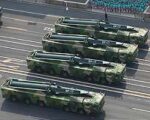California-based Velo3D and industrial gas giant Linde are partnering to qualify copper-nickel (CuNi) alloy for use in metal additive manufacturing (AM), aiming to bolster the U.S. Navy’s ability to produce critical ship components on demand. The initiative targets key maritime applications where corrosion resistance and supply agility are vital.
Strategic Relevance of CuNi in Naval Applications
Copper-nickel alloys—typically composed of 70% copper and 30% nickel—are widely used in naval architecture due to their excellent resistance to seawater corrosion, biofouling, and stress cracking. These properties make CuNi indispensable for components such as piping systems, heat exchangers, seawater valves, condenser tubes, and hull fittings across a range of U.S. Navy vessels including submarines and surface combatants.
However, traditional casting or forging methods for CuNi components involve long lead times and limited flexibility in low-volume production. This is particularly problematic for aging platforms where legacy parts may no longer be available from original suppliers or require costly retooling.
Additive Manufacturing as a Naval Supply Chain Enabler
The collaboration between Velo3D—a leader in laser powder bed fusion (LPBF) systems—and Linde’s Additive Manufacturing Technology Center (AMTC) seeks to address these bottlenecks by qualifying CuNi30 alloy for AM production using Velo3D’s Sapphire printer platform. The goal is to enable just-in-time production of mission-critical parts at or near the point of need.
This aligns with broader Department of Defense (DoD) initiatives under the Joint Additive Manufacturing Model Exchange (JAMMEX) framework and NAVSEA’s Digital Thread strategy aimed at digitizing part inventories and enabling distributed manufacturing across shipyards and forward-deployed units.
“Additive manufacturing has the potential to transform how we source replacement parts,” said Dr. Zach Murphree, VP of Global Sales & Business Development at Velo3D. “By qualifying CuNi30 on our platform with Linde’s process expertise, we’re helping make that vision a reality.”
Technical Challenges in Printing Copper-Nickel Alloys
While copper-nickel alloys are well understood metallurgically in casting contexts, adapting them for laser-based AM presents unique challenges:
- Thermal conductivity: High thermal conductivity can lead to rapid heat dissipation during printing, affecting melt pool stability.
- Reflectivity: Copper-rich alloys reflect much of the laser energy used in LPBF systems (~1060 nm wavelength), reducing energy absorption efficiency.
- Ductility control: Maintaining mechanical properties comparable to wrought forms requires precise thermal management during build cycles.
Linde brings its proprietary ADDvance® O₂ precision gas control system into this partnership—designed specifically for oxygen-sensitive materials—to ensure consistent print quality by maintaining ultra-low oxygen levels (<10 ppm) inside the build chamber. This is crucial for minimizing oxidation during melting and solidification phases.
Implications for Fleet Readiness and Sustainment
The successful qualification of CuNi30 would allow the U.S. Navy—or its prime contractors—to produce corrosion-resistant components on-demand without relying on legacy foundries or long-lead procurement cycles. Key benefits include:
- Sustainment agility: Rapid replacement part production improves operational availability of ships undergoing maintenance or deployed far from supply hubs.
- Spares digitization: Digital part files can be stored securely within NAVSEA repositories like JAMMEX or AMMP platforms for distributed printing when needed.
- Cost avoidance: Avoids expensive tooling or minimum order quantities required by traditional suppliers for low-volume legacy parts.
This capability becomes especially relevant as the Navy seeks to extend service life of existing platforms like Arleigh Burke-class destroyers or Virginia-class submarines amid constrained shipbuilding budgets.
Navy Additive Manufacturing Policy Context
The U.S. Navy has steadily expanded its additive manufacturing footprint over the past decade through programs such as NAVSEA’s Technology Insertion Program (TIP), America Makes partnerships, ONR-funded research efforts at institutions like Penn State ARL, and fleet experimentation aboard ships like USS Essex (LHD-2).
A milestone was reached in March 2021 when NAVSEA authorized the first metal AM component—a prototype drain strainer assembly—for shipboard installation aboard USS Harry S Truman (CVN-75). Since then, over two dozen non-critical metallic parts have been qualified under controlled test environments.
The current push toward material diversification—including stainless steels (316L), Inconel alloys (IN718), titanium grades (Ti-6Al-4V), aluminum-scandium blends—and now copper-nickel reflects growing confidence in AM repeatability across platforms.
Linde-Velo3D Roadmap Toward Qualification
The qualification effort will follow ASTM F3301 guidelines covering process validation steps including powder characterization, parameter optimization trials using design-of-experiment matrices (DOE), mechanical testing per MIL-STD standards (e.g., tensile strength per ASTM E8/E8M), microstructure analysis via SEM/EDS/XRD methods, porosity inspection via CT scanning/NDE techniques, and final part dimensional validation against CAD models within ±0.1 mm tolerances typical for LPBF processes.
If successful—and accepted by NAVSEA—the partners could unlock a new class of corrosion-resistant AM-compatible materials suitable not only for sustainment but also future ship design insertions where weight savings or complex geometries offer performance advantages over cast equivalents.
Outlook: Toward Distributed Maritime Manufacturing
This initiative complements broader DoD goals under initiatives like Project DIAMOnDS (Distributed Inventory Additive Manufacturing Operational Networked Data System) which envisions forward-deployed units equipped with certified printers capable of producing validated parts using digital twins stored securely via blockchain-enabled repositories such as SIMBA Chain or Xage Security frameworks integrated with DoD cloud infrastructure.
If proven scalable beyond prototype stages—and supported by robust digital QA/QC pipelines—CuNi additive manufacturing could become a cornerstone capability within future distributed logistics architectures envisioned under Joint All-Domain Command & Control (JADC2) concepts supporting maritime operations in contested environments such as INDOPACOM AORs where resupply lines may be degraded or denied outright due to adversary A2/AD capabilities.









